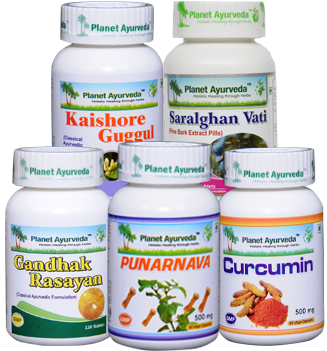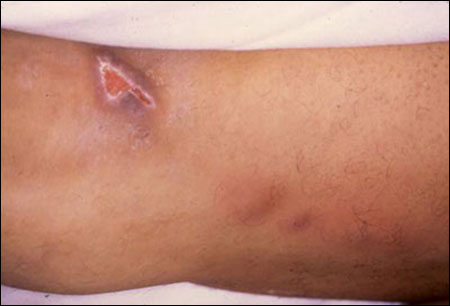Colonoscopy is broadly used for the diagnosis and treatment of colonic disorders (Range of diseases, including inflammatory bowel disease – Crohn's disease and ulcerative colitis – diverticular disease and colon cancer. Colonoscopy, in which the doctor looks inside the colon of the patient with a thin, flexible tube that holds a tiny camera and light. Colonoscopy is one method that doctors use to diagnose UC and Crohn's diseases. A colonoscope is a long, thin flexible tube with a camera at the end. The doctor uses it to view the inside of your colon and rectum. In this article, we are going to put a lime light on when a patient is in need of a colonoscopy.

INDICATIONS FOR COLONOSCOPY
- In lower Gastrointestinal bleeding
- For the screening of colorectal polyps
- Help to diagnose colon cancer, colorectal cancer
- Acute and chronic diarrhea
- Abnormal radiological examination
- In unexplained abdominal pain
- Long term chronic constipation
Inflammatory Bowel Disease (IBD) includes two conditions (Crohn's disease and Ulcerative colitis) that are characterized by chronic inflammation of the gastrointestinal (GI) tract. Long term inflammation results in damage to the GI tract. So we need to clear out the exact difference between Crohn's disease and ulcerative colitis and the need to do colonoscopy.
Ulcerative Colitis
Ulcerative colitis is an inflammatory bowel disease (IBD) that causes inflammation and sores in the digestive tract. Ulcerative colitis affects the innermost line of intestine (colon) and rectum. Occurs in the large intestine (colon) and the rectum.
Symptoms:-
The most common symptoms are diarrhea, bleeding from the anal route and pain in the abdomen.
A colonoscopic finding in ulcerative colitis is swelling, redness, and sores in the intestine. It can show the severity of disease. It will help the doctor to make a correct diagnosis with a colonoscop
Endoscopic Score Of Ulcerative Colitis:-
- Score 0 - Normal
- Score 1 - Mild disease
- Score 2 - Moderate disease
- Score 3 - Severe Ulceration
Crohn's Disease
Crohn's disease is a disorder mediated by t -lymphocytes cells which arises in genetically susceptible individuals because of breakdown in the regulatory constraints to enteric bacteria. Can affect any part of the GI tract (from the mouth to the anus) - Most often it affects the portion of the small intestine before the large intestine/colon.
Symptoms:-
- Abdominal pain is the most common symptom
- Chronic diarrhea
- A feeling of fullness
- Fever
- A loss of appetite
- Weight loss is a common symptom
- Abnormal skin tags (usually on patient’s buttocks)
- Anal fissures can be there
BASIC SYMPTOMS OF IBD WHEN A DOCTOR THINKS ABOUT COLONOSCOPY
Many of the same symptoms can indicate other problems, but in long term if following common symptoms persist then doctor may advise colonoscopy in Ulcerative Colitis Or Crohn’s Disease.
- Abdominal Pain
- Bloating
- Chronic Fatigue
- Blood in Stools
- Narrow Thin Stools
- Persistent Diarrhea
- Constipation
- Change in Bowel Habits
- Weight Loss
- Cramps
COLONOSCOPIC FINDINGS OF IBD
Cobblestoning (Uncommon finding) mucosa and linear ulcers characterize the endoscopic appearance of Crohn's disease. Inflammatory bowel disease (IBD) can be broadly classified into Crohn disease (CD) and ulcerative colitis (UC). It is a chronic idiopathic (Cause unknown) inflammatory disorder badly affecting the gastro-intestinal tract. Terminal ileum is not predominantly involved in Ulcerative colitis but is commonly involved in Crohn's diseases.
AYURVEDIC PERSPECTIVE OF IBD
Rakta Atisara
The vitiated pitta dosha and continuous hetu sevana cause depraved blood and hence rakta atisara. The symptoms include Daha i.e burning sensation, pain, thirst and guda pak i.e rectal abscess, rectal bleeding (Ch. Chikit. 19). Rectal blood is mixed with fecal discharge. The rise in symptoms is due to regular and excessive intake of pitta vardhak aahar (food that vitiates the pitta dosha).
Grahani Rog
The vitiated agni (agni mandya) in grahani is grahani rog.
The food we take in the form of Aahar which is important for the nourishment of DHATU (7 dhatus), AGNI is the main cause of that nourishment. Because if agni gets vitiated, the digestion of food and hence proper nourishment will not be there.
Types Of Grahani Rog:-
- Vataj Grahani (Ch. Chikitsa 14/60-62) - The patient suffering from Vataj grahani has depraved digestion and sour outcome of rasa pak after meal, Digestion impaied, Feeling dry, Excessive thirst and hunger.undigested food passed in the form of vomitus and in stool, difficulty in defecation and stool passed is usually dry or watery sometimes, Aamyukt (presence of undigested food), coughing and breathing difficulties are other prominent symptoms of vataj grahani.
- Pittaj Grahani (Ch. Chikitsa 14/65-66) - The skin color of the patient gets pale. The stool passed is usually yellow and sometimes blue. Rotten food like burp, Pain in chest, Anorexia , Thirst.
- Kaphaj Grahani (Ch. Chikitsa 14/67-70) - Troublesome digestion Anorexia ,feeling of vomit, Sweetness in mouth, Coughing Stool passed is usually undigested ,kapha mixed and heavy as compared to vataj and pittaz grahani.
- Tridosha Grahani (Ch. Chikitsa 14/72) - Tridosha grahani means assimilation of all three types of doshas and hence assimilation of symptoms of all the doshas.
Classical Medicines / Home Remedies / Combinations:-
- Use of Goat Milk - Cold milk of goat mixed with honey and sugar can be used to wash the anal region after defecation (Charak 15)
- Fruit Soup - The patient of ibd can be given the soup of Gambhari fruit (Gmelina Arborea) with juice of pomegranate. (Charak chik)
- Powder of Neelkamal, Mochras, Lajjavathi, Kamal kesar in equal quantities can be used in the patient of ibd. (Cha Chik. 15)
HERBAL REMEDIES FOR INFLAMMATORY BOWEL DISEASE
Planet Ayurveda is a leading herbal manufacturing company. This company manufactures various herbal products for various diseases. The herbal products are made from the standardized extracts of potential herbs and are 100% natural and vegetarian. These products are made under the guidance of experts.
- Vatsakadi Churna
- Pitta Balance
- Kutajghan Vati
- Cap. Arjuna
Ulcerative Colitis Care Pack
PRODUCTS DESCRIPTION
1. Vatsakadi Churna
Vatsakadi churna is a Herbal supplement to cure IBD. It contains Kutaj (Holarena antidysentrica) which helps in effective management of digestive problems and efficient medicine to check gas formation and abdominal discomfort as Kutaj (Holarrhena antidysenterica) and Bilva (Aegle marmelos) are the main ingredients of vatsakadi churna.
Dosage - 1 teaspoonful twice daily with plain water after meal or you can boil the powder - 1 teaspoonful in 400 ml water, keep it boiling until it remains 50 ml. Strain it and drink the water. Leave the residue. Do it twice daily. Make fresh every time.
2. Kutajghan Vati
It is classical herbal formulation which contains Kutaj (Holarehna antidysentrica) as the chief ingredient which is efficient herb as it has anti-dysenteric, antidiarrheal, anti-amoebic action and haemostatic properties for treating a group of ailments including dysentery, diarrhoea, malabsorption syndrome, intestinal infections, effective because of its anti dysenteric properties, much effective in ibs and ulcerative colitis.
Dosage - 2 tablets twice daily with plain water after meal.
3. Pitta Balance
Pitta balance is a polyherbal formulation prepared using Jaha rmohra pishti, Akika pishti and many other calcium compounds. It balances pitta dosha and hence improves digestion during IBD like conditions.
Dosage - 1 capsule twice daily with plain water after meal.
4. Cap. Arjuna
Arjuna is the chief ingredient of Cap. In IBD, heavy blood loss occurs, hence arjuna boosts the HB level in blood and promotes overall status of the body. Arjuna has cold potency which mainly aids in managing blood loss and promotes good hemoglobin.
Dosage - 2 capsules twice daily with plain water after meal.
CONCLUSION
In conclusion it is quite evident that colonoscopy is recommended by doctors in Inflammatory bowel diseases especially on the symptoms of Ulcerative colitis, Crohn's disease or colon cancer so as to make an exact diagnosis. For quick and long term relief in conditions like IBD above, ayurvedic prescriptions of Planet Ayurveda and basic ayurvedic texts are safest and help patients to get long lasting relief concerning Planet Ayurveda.





















